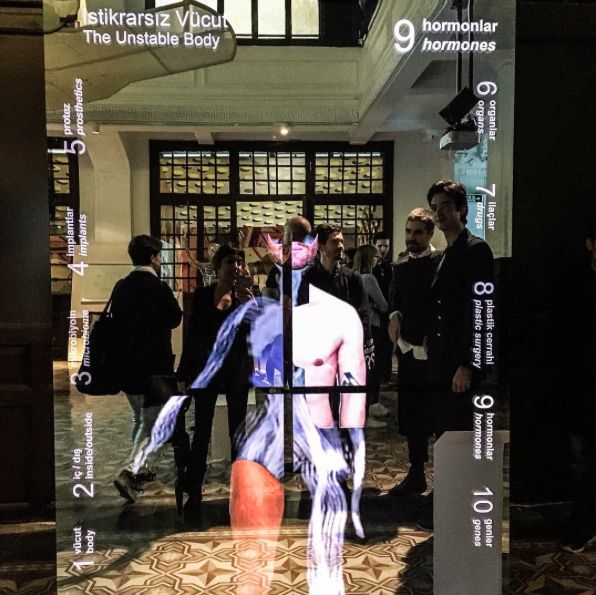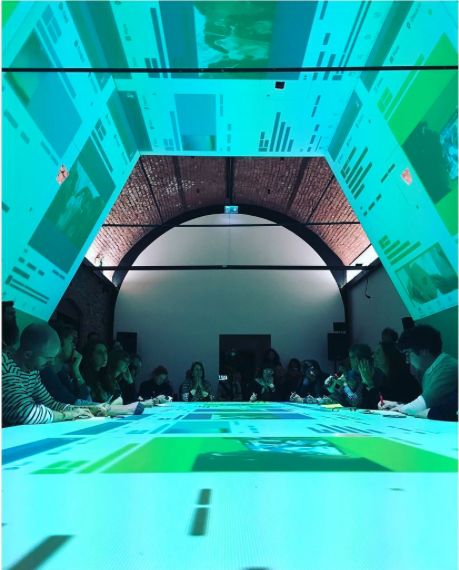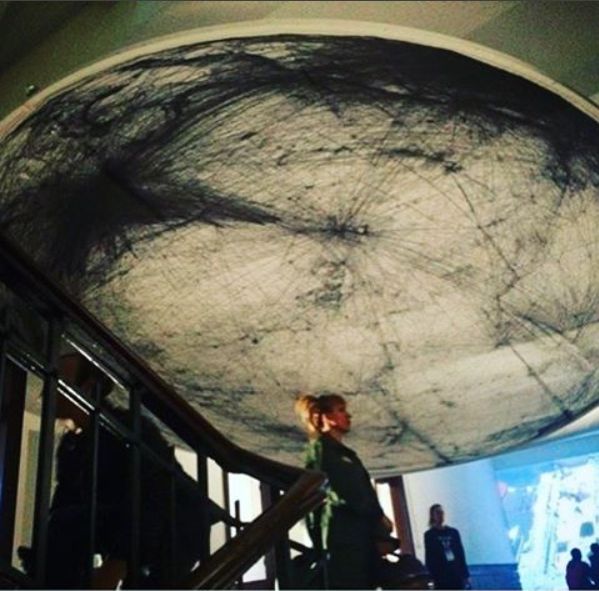About the project
The design of the 3rd Istanbul Biennial, “Are We Human?”, follows four strategies:
- Inquiring Archipelago
Rather than answers, the Biennial provides questions. “Are We Human?” has been designed as a platform for wide discussion. It is distributed in six different venues, each connected with a specific section of Istanbul’s dynamic and the networks of interaction in which each takes part. In each venue, the discussion is enacted through a different mode of collective querying: Depo will work as a radio station, Studio X as a lab, Galata Greek School as a school, Bomonti as a time machine, and the Archeological Museum as a wundergallery.
Contents from the galleries’ interiors will jump out from their windows. Billboards, buses, and bus stops in between venues will be echoing and expanding onto the streets the debate that the platform
channels. Rather than a center of diffusion, the Biennial works as a woven-within-the-city questioning platform.
- Clustered Evidences
The Biennial brings evidences. They are not celebrated, nor elucidated, but rather displayed for examination. It is not conceived as a collection of isolated installations, but as a sequence of clusters—constellations of archaeological, design, artistic, and research work—making it possible to explore their tensions and their capacity to confront and cooperate with each other.
- Colliding Publics
Events, presentations, panel discussions, and practical services (café, shop, etc.) are all accommodated within the exhibition spaces. Performances and exhibited works mutually expand and dispute each other. These services are taken as opportunities to interrogate the way they relate to the “Are We Human?” debate. The gallery collides all groups of people, moods, and attitudes, recognizing all of them as enactors of content and criticality.
- Transmedia Constituencies
Every venue is thought of as a transmedia demarcation. Depo works as a radio station as well as the base for the Superhumanity Network of text production, translation, distribution, and reception. Its offline space will operate as a node in the making of an online cyber community. The calendar of contributions is hosted by a mural timeline that will get progressively covered with arriving contributions from around the world. The actual process of translating the texts will be happening in Depo, where the process becomes visible and unblackboxed to the examination of the Biennial’s visitors. Studio X becomes the headquarters of the working group that is already composing a timeline of Turkish modern design.
Every week their meetings are hosted in what is being called “the wunderscanner,” a device that exhibits the material findings of the group and empowers the capacity of the group to use their findings as instigators of research. Greek School is prepared to become an open-plan and classroom-less satellite of Istanbul’s schools; students from all around the city were enrolled in the Biennial’s discussions and activities. Bomonti, expanding its opening hours into the night, is prepared to host daily events within the space of its galleries. A dance floor and the “2 Seconds TransBoarding Room” paired their use as daytime exhibition devices with a nightlife of uncertain interaction, edited online and broadcasted to the already numerous “Are We
Human?” network of distant followers.
Credits
Andrés Jaque / Office for Political Innovation
Design and Production Team
Andrés Jaque, Laura Mora, Roberto González, Silvia Valero, Martín Noguerol, David Rodrigo, Marina Fernández, Federico Landi, Andrés Castañeda, Sebastian Kurth, Santiago Montenegro, Michael Nathan, Paola Pardo-Castillo, Andrés Villar, Julie L. Parisi, Andrea Capelli







